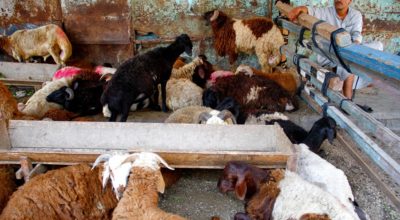According to the IMF, polymer-based banknotes are now used in more than 20 countries (including the UK, New Zealand, and Australia), and Egypt is planning to join them gradually by turning the EGP 10 banknote into plastic. Central Bank of Egypt (CBE) Deputy Khalid Farouq recently announced to Masrawy that the governmental institution will begin printing the EGP 10 polymer-based banknotes as of June 2021. These notes are known to be more difficult to fake and they save the government some good money. The Bank of England had estimated that plastic banknotes will save Britain 100 million pounds ($164.85 million) over a decade of usage. But we ask the question: is this bad for the environment?
They Last Longer: And That’s Better For the Environment
A study commissioned by the Bank of England showed that polymer banknotes last 2.55 times longer than paper cash. However, in a more in-depth “sensitivity analysis”, their study revealed that plastic notes only need to last 1.33 times longer than paper ones before achieving a lower global warming potential.
Their life expectancy makes them more environment-friendly than paper notes. Because of this, expert-partner and sustainable development company Carbon Trust has certified polymer-based £5 notes to have a carbon footprint lower by 16% than paper notes.
They Can Be Recycled
Coming towards the end of their life-span, paper bills are usually shredded, whereas polymer notes aren’t.
They’re also shredded, yes, but then converted into pellets (small particles that consist of compressed polymer-based plastics), then used as everyday plastic products.
The Environmental Impact in Numbers
Surprisingly, studies from around the world have managed to measure their positive impact on the environment in numbers. In a study conducted by business consultancy PE Americas and health & environment company Tryskele, the difference in environmental impact between paper and plastic banknotes was assessed and compared in their life-cycle assessment report. Their year-long study showed the following:
- 32% reduction in global warming
- 30% reduction in primary energy demand
But Of Course, There Are Critics
Despite the advocacy, there have been numerous critics who have highlighted the following drawbacks of using these new notes:
- Higher upfront production cost.
• Hard to fold.
• Not clear if compatible with existing automatic payment and vending machines.
In addition to these listed disadvantages, religious and vegan groups have also expressed their dislike for these plastic notes. After unearthing animal fat in the new plastic banknotes, these groups complained to the Bank of England and made it clear they would not use the new issued noted and requested a change in the production process. After “careful and serious consideration and extensive public consultation”, the bank refused to alter its production seeing as how the alternative would be palm oil; which would be expensive and raise speculations regarding environmental sustainability.
Bearing this in mind, the CBE has yet to announce the constituents of its new plastic currency.




























